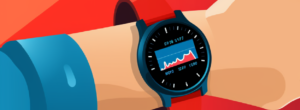-
Provided by

- Date published: Apr 11, 2023
- Categories
In 2020, Spotify brought people analytics to the party with the launch of ‘Disco,’ its in-house solution for HR reporting and analysis.
Before the days of Disco, Spotify’s HR function had no single source of truth. It couldn’t aggregate multiple data sources into one clear view. This created an analytics function that was high in complexity and low in value, greatly limiting the ability of HR leaders to self-serve insights. People analytics in this state was simply not scalable. Accordingly, Spotify built its custom platform on two core pillars:
- A data warehouse capability that rebuilds the foundations of Spotify’s data strategy. This platform provides the scale and ability to answer the most challenging questions about its people.
- A user-facing app that reimagines how Spotify’s people leaders consume data products. It acts as the single version of truth for all key people-related metrics.
Ahead of an upgrade to Disco 2.0 in 2023, we tune in to lessons from Gary Munro, Director of HR Insights, about the guiding principles behind Spotify’s custom people analytics product, and how it is helping Spotify move HR from administrative to a strategic partner at all stages of the employee lifecycle.
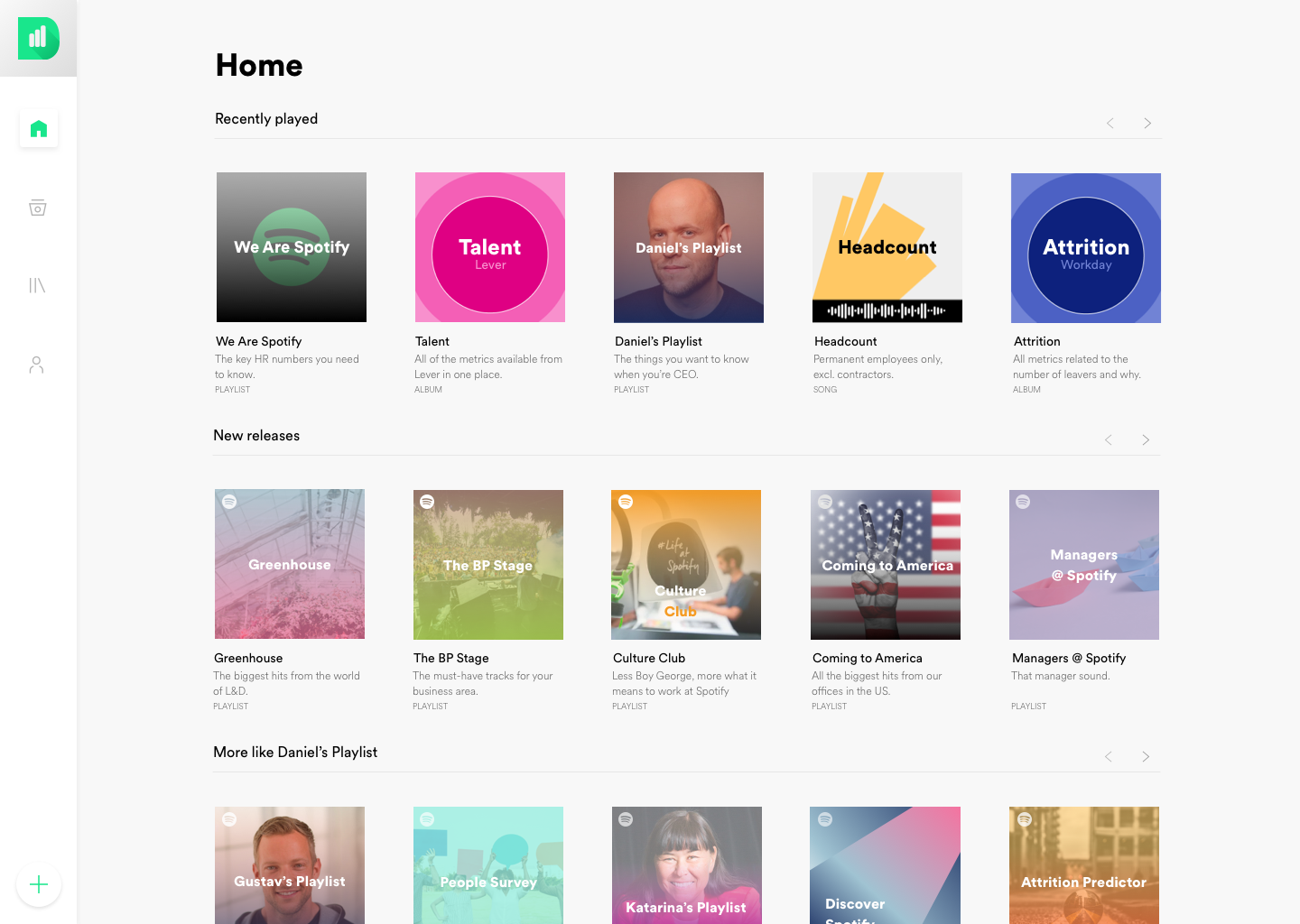
Let’s groove: Disco’s founding principles
In pursuit of a more impactful people analytics program, Disco focused on two core pillars for its in-house product: A backend data warehouse and a front-end app for its people leaders to use. The data warehouse was built on what Spotify calls ‘The Water Principles’. Munro shares an abridged summary of these principles:
- Don’t drown: Prioritize the right data sets first and don’t take on everything at once.
- Don’t water the lawn with bottled water: Focus on data quality. But don’t worry about everything being 100% accurate.
- Clean your water at the source: Fix issues in source systems and don’t build workarounds.
- Packaging matters: Never underestimate the importance of how you package the outputs of your data processes, both in terms of accessibility and presentation.
Whilst the first three principles all bang the drum of quality delivered through careful prioritization, the last principle highlights the need for Spotify’s other focus area: An accessible front-end application. Munro shares a similar summary of the founding principles for the front-end platform. The language shifts, for these principles, to be user-centric.
- Humans are creatures of convenience: If something is difficult to find or navigate, we give up quickly. How many times do you go onto the second page of a search engine result?
- We eat with our eyes: We often decide whether something is good or not by how it looks. Create a visual layer that does your content justice.
- Good enough isn’t enough: Prioritize excellence in all aspects of the team’s output. Reputation matters for trusted content.
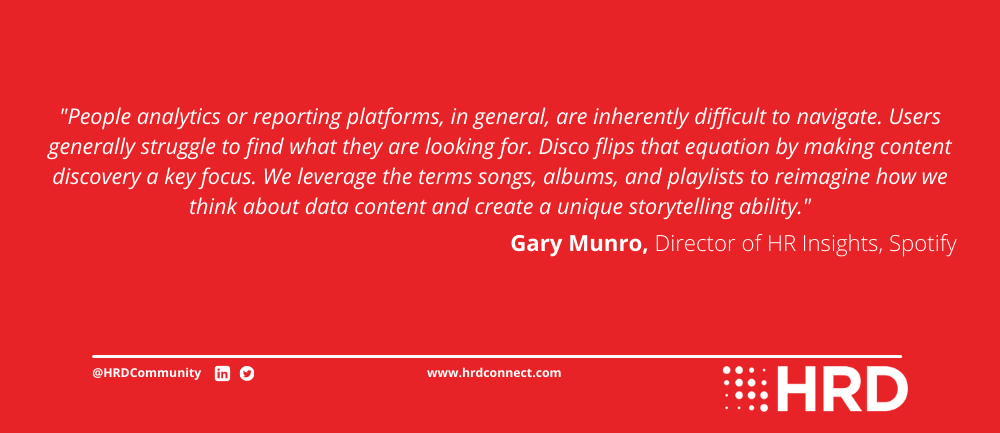
Turn The Beat Around: How Spotify’s customer-facing product influenced ‘Disco’
With its founding principles in place, Spotify set about creating a consumer-like product that felt familiar to its users. Spotify’s mission is to unlock human creativity and connect billions of fans with the art of creators across the globe. Although the content differs, there are undeniable ties to the goals of any thriving people analytics scheme: Discovery and connecting users with content they love and can be inspired by. “You produce an output that you want to get into the hands of the right people, at the right moment, to help support decisions that the business is making,” Munro explains.
Munro shares the initial objectives for Disco, and how it turns Spotify’s core product around to meet the needs of its workforce, thereby addressing the shortcomings of many analytics products.
“We wanted to create a consumer-like product that felt familiar, lowering the complexity, and increasing the accessibility of the content. We wanted a version of Spotify where we replaced audio content with data.
“People analytics or reporting platforms, in general, are inherently difficult to navigate. Users generally struggle to find what they are looking for. Disco flips that equation by making content discovery a key focus. We leverage the terms songs, albums, and playlists to reimagine how we think about data content and create a unique storytelling ability.”
The songs, in this case, represent a given metric. Albums consist of a compilation of metrics linked to the various stages of an employee’s life cycle. Playlists arrange data based on a specific theme and weave metrics together to create a unique narrative. This terminology and accompanying UX immediately places Spotify’s people analytics as familiar, digestible, and actionable.
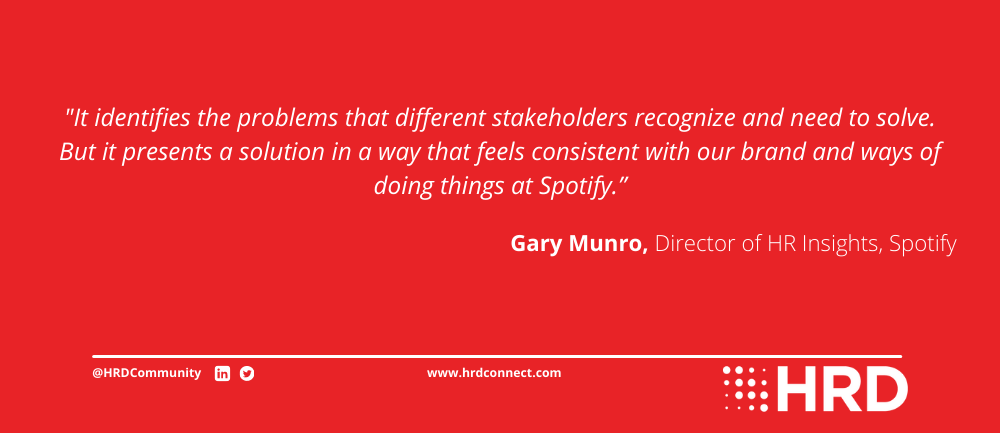
More More More: Scaling ‘Disco’ at Spotify
To begin scaling people analytics, Munro emphasizes the importance of getting the foundations of a data strategy in place and “sticking to the design principles”. Accordingly, Spotify built the data warehouse on the premise of “a single line of data for every Spotifier.” From application to exit, the warehouse pulls data from every HR system including recruitment, L&D, employee surveys, and more. But the crux of any organizational transformation, especially one that involves new technology, is people. Generating buy-in at all levels, and driving adoption, is an ongoing challenge for people analytics.
The front-end design of ‘Disco’ was a masterstroke that pre-empted this challenge. “We created a brand and product in Disco that people believe in,” Munro notes. “It identifies the problems that different stakeholders recognize and need to solve. But it presents a solution in a way that feels consistent with our brand and ways of doing things at Spotify.”
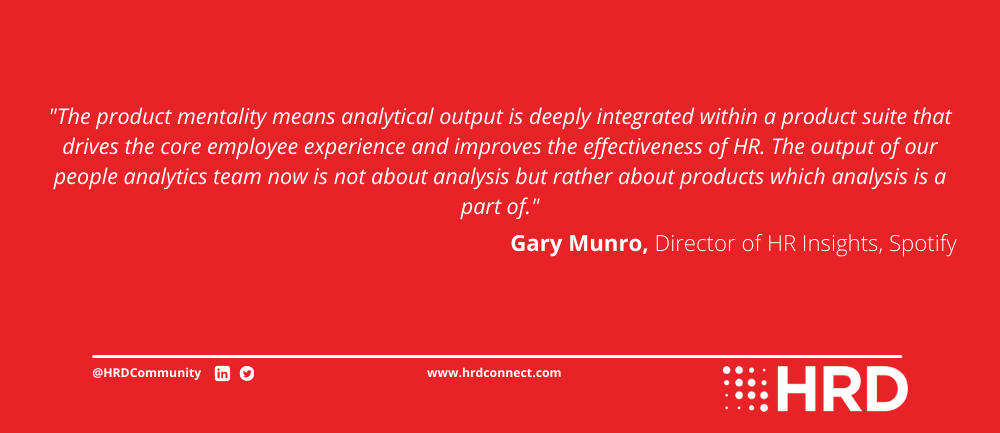
By being brave enough to come at this problem with a different perspective, Spotify was able to negate resistance to this new method of data-driven HR decision-making and create a platform that is easy to use.
Adopting a product mentality has also helped Spotify to scale its people strategy. Munro elaborates:
“The product mentality means analytical output is deeply integrated within a product suite that drives the core employee experience and improves the effectiveness of HR. The output of our people analytics team now is not about analysis but rather about products which analysis is a part of.”
Beyond people analytics, Spotify has scaled this methodology to other areas of its people strategy. In 2022, it launched ‘Scout,’ a product for identifying internal talent, and has further products in the pipeline for 2023.
The team is now equipped to focus on strategic work above transactional or administrative work. From informing Spotify’s ‘Work from Anywhere’ strategy to a complete revamp of how it reports on recruitment, data now forms a key role in informing Spotify’s most important strategic decisions across all stages of the employee lifecycle.
And The Beat Goes On: Disco 2.0
In 2022, Disco benefitted from the biggest release of new features since its launch. These enhancements focused on usability and convenience for users on the front end and improving efficiency in data ingestion and processing on the back end.
2023 will see Spotify release Disco 2.0. Unlike its first iteration, this development will be an evolution rather than a revolution. The focus for Disco 2.0 is on the power of data storytelling and developing a richer picture with which to equip people leaders across the business. “The main focus will be on the content in the platform,” Munro explains. “Disco 2.0 will leverage even more value from the data we have in the platform and continue to evolve our storytelling with data. Beyond that, our focus is continuing to embed Disco at the very core of the function.”
As the platform evolves, Spotify will make embedding data analytics an ever-present imperative. By ingraining people analytics into day-to-day practices, rather than as a standalone and separate exercise, its influence permeates into everything Spotify does to serve its workforce. That’s music to our ears.



